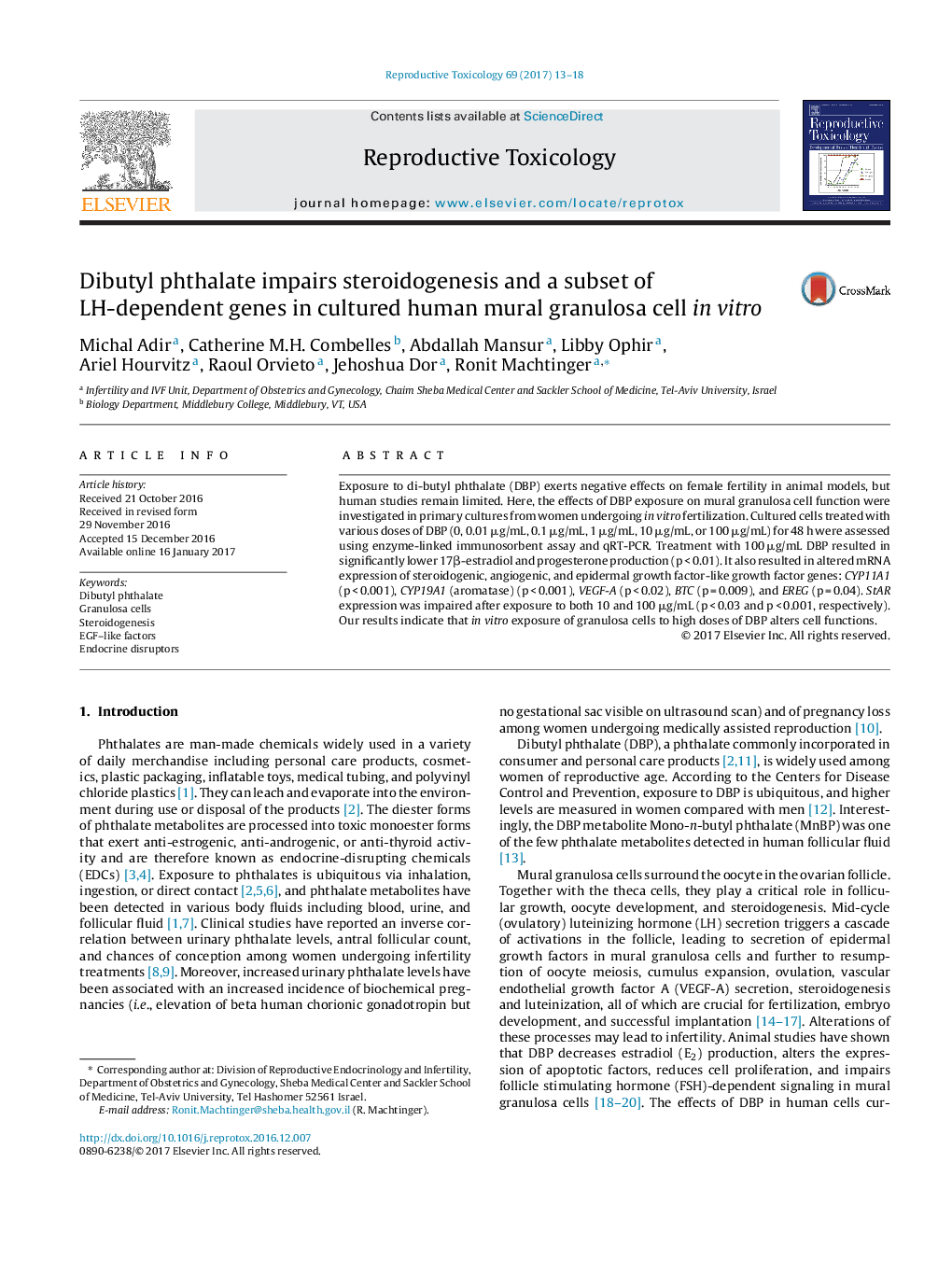| Article ID | Journal | Published Year | Pages | File Type |
|---|---|---|---|---|
| 5561576 | Reproductive Toxicology | 2017 | 6 Pages |
Abstract
Exposure to di-butyl phthalate (DBP) exerts negative effects on female fertility in animal models, but human studies remain limited. Here, the effects of DBP exposure on mural granulosa cell function were investigated in primary cultures from women undergoing in vitro fertilization. Cultured cells treated with various doses of DBP (0, 0.01 μg/mL, 0.1 μg/mL, 1 μg/mL, 10 μg/mL, or 100 μg/mL) for 48 h were assessed using enzyme-linked immunosorbent assay and qRT-PCR. Treatment with 100 μg/mL DBP resulted in significantly lower 17β-estradiol and progesterone production (p < 0.01). It also resulted in altered mRNA expression of steroidogenic, angiogenic, and epidermal growth factor-like growth factor genes: CYP11A1 (p < 0.001), CYP19A1 (aromatase) (p < 0.001), VEGF-A (p < 0.02), BTC (p = 0.009), and EREG (p = 0.04). StAR expression was impaired after exposure to both 10 and 100 μg/mL (p < 0.03 and p < 0.001, respectively). Our results indicate that in vitro exposure of granulosa cells to high doses of DBP alters cell functions.
Related Topics
Life Sciences
Environmental Science
Health, Toxicology and Mutagenesis
Authors
Michal Adir, Catherine M.H. Combelles, Abdallah Mansur, Libby Ophir, Ariel Hourvitz, Raoul Orvieto, Jehoshua Dor, Ronit Machtinger,
